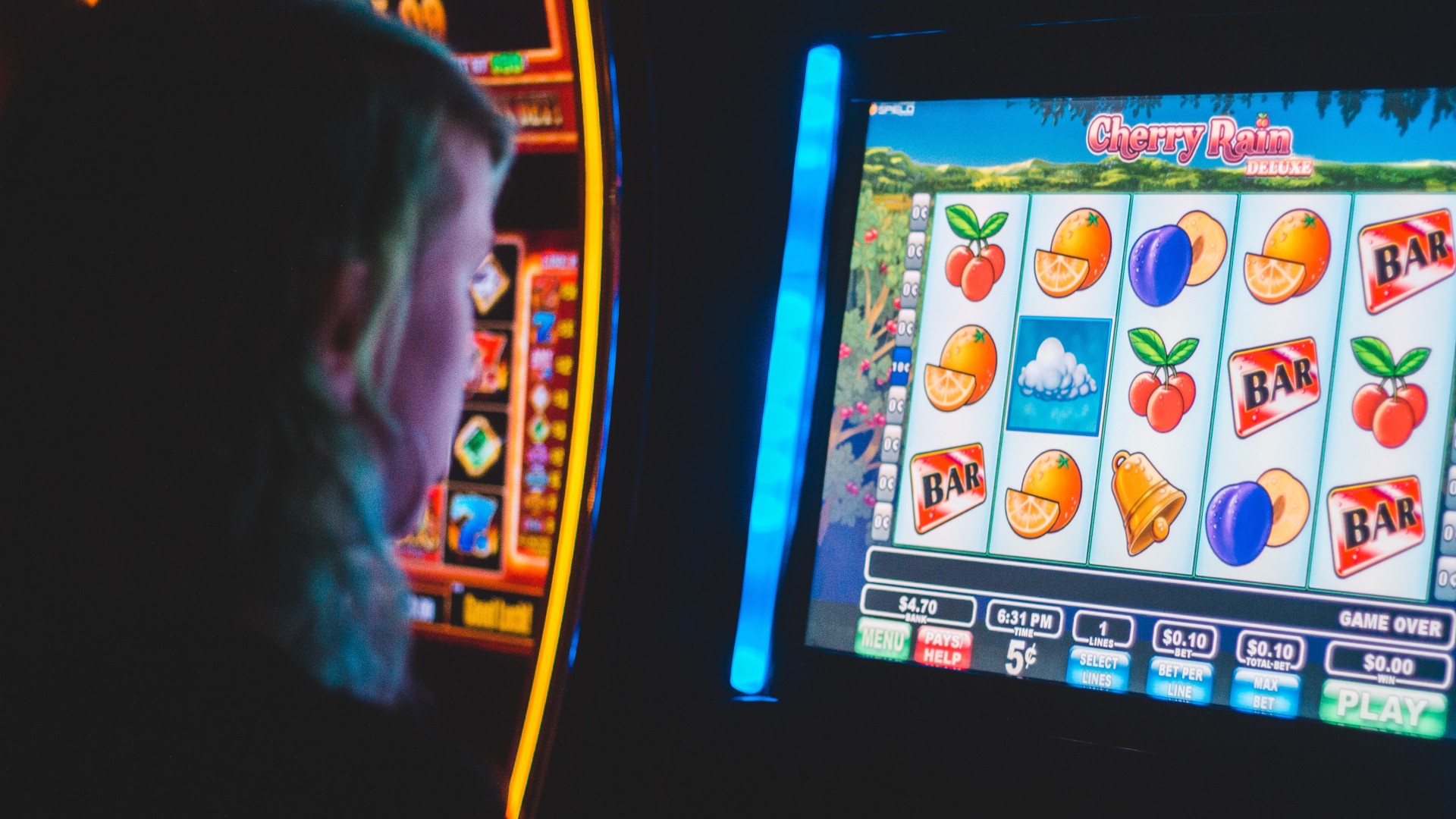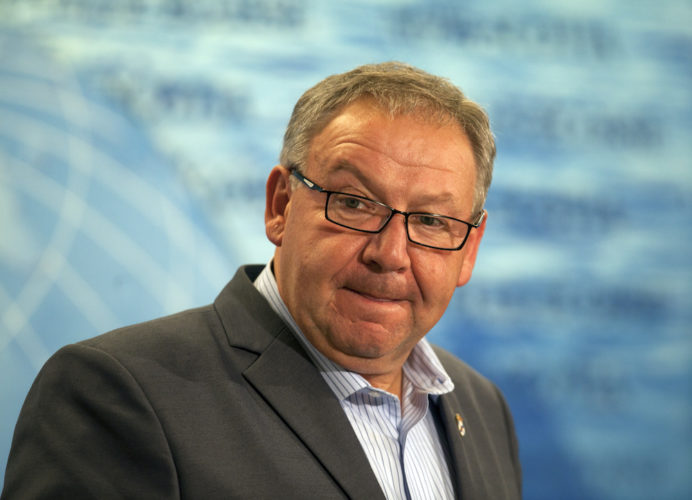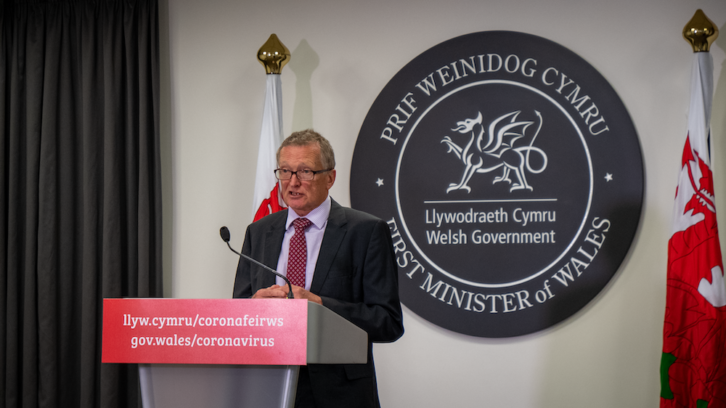The public has far less access today to research documenting damage from VLTs

caption
A person plays a VLTThe gaming corporation commissions research on gambling rates but details are not made public
At one time in Nova Scotia, if you wanted to know what percentage of VLT players were problem gamblers or how many people played the machines, you could find details online in research commissioned by the provincial government.
But that kind of information is now harder to find. As a result, there is very little current public information on the effects here of what has been nicknamed “the crack cocaine of gambling.”
Since about 2010, the province has moved away from the kind of highly publicized research that once made headlines. Studies were killed and others started but not released for years. Research being done today is more scholarly in nature, or mostly unavailable to the public. One Nova Scotia company that built up extensive expertise saw its government business dry up after work on the ill-fated My-Play VLT card system was terminated mid-contract.
Nova Scotia’s original gambling research capacity was built up in the 1990s, when regulated VLT gambling was new. In 1993 and 1996, the provincial health department commissioned two surveys on the prevalence of gambling and there was an arms-length regulator that published its own extensive research, the Nova Scotia Alcohol and Gaming Authority. Then, in 1988 the Liberal government of Russell MacLellan created the Nova Scotia Gaming Foundation It was funded with a one per cent cut of VLT retailer commissions and a matching grant from the Nova Scotia Gaming Corporation, and had a board of community volunteers.
Gaming authority dismantled
The gaming authority was effectively gone by 2000, its board fired by the Conservatives under John Hamm and its responsibilities split between a government department and the Utility and Review Board. It’s extensive research devolved into an annual statistical summary. But the government continued to commission research, often funded by the gaming foundation. The foundation itself promoted public awareness of problem gambling and advocated privately with the minister to reduce harms.
Two further gambling prevalence studies, as well as an initial study of a card system to help players avoid trouble, were done by Focal Research, a Nova Scotia company that had begun doing gambling research even before VLTs were introduced in 1991. It was the 2007 prevalence study that notably concluded that problem gamblers were responsible for 50 per cent of profits from VLTs.
But after the NDP was elected in 2009, things began to change.
In 2010, the Darrel Dexter government killed a study of the socio-economic impacts of gambling that has been commissioned three years earlier by the labour department under the Conservatives, and originally was to be ready in a year. The NDP refused to release a draft, saying it was unreliable.

caption
Darrell DexterAlberta economic researcher Mark Anielski had developed a framework for analyzing the impact of gambling. His co-researcher, Harold Wynne, was one of the developers of the widely used problem gambling severity index.
“So what we said is ‘OK, let’s develop a set of survey questions that… would ask very specific questions to those problem gamblers and their families on very qualitative, quality of life impacts,” Anielski said.
The NDP government at first continued the work, but then the questions began.
“We did the survey and my guess is the results gave them some heartburn…so then they just had to make a case that our results were in question…It was very disappointing; it was very upsetting.”
Anielski said the government offered a third of the $65,000 he would have been paid to complete the contract, but he refused to take it. He said this is only time his work has been questioned this way.
My guess is the results gave them some heartburn
Mark Anielski
A focus on problem gambling is not consistent with the (request for proposals)
Nova Scotia government
After a public uproar and an FOI request by the group Game Over VLTs and The Canadian Press, the government reluctantly released a redacted draft in 2011 with annotations that pointed out what it considered flaws. The report estimated an average of 5.6 gambling-related suicides a year in Nova Scotia.
In one of its annotations on the report, the government said, “A focus on problem gambling is not consistent with the (request for proposals for the contract).”
The same year, 2011, the NDP government began dismantling the gaming foundation, by then called Gambling Awareness Nova Scotia.
The NDP’s 2011 gaming strategy said Gambling Awareness would be folded into the former Nova Scotia Health Research Foundation, with the goal that Nova Scotia would become “a world leader in high-quality gambling research.”
Instead, Gambling Awareness’s was merged into the health department, its role scaled back and its volunteer board dissolved and replaced with government officials.
Millions of dollars from VLT commissions and the gaming corporation piled up, unspent, though the foundation continued awarding grants. It was finally dissolved by the Liberals by way of two cabinet orders in late 2020 and early 2021.
The first allowed its funds to be spent on issues beyond gambling and permitted the organization to transfer the unspent money to the government. Shortly afterward, the foundation transferred all its assets, $6.6 million set aside over the years for gambling research. The second order in March 2021 killed the foundation altogether.
“The dissolution of Gambling Awareness Nova Scotia as a stand-alone entity, allowed funds for key initiatives to address a range of mental health and addiction initiatives,” according to written answers provided by the Department of Health and Wellness.
“The remaining $6.6 million in funds were allocated to various services and supports provided by the Nova Scotia Health Authority, IWK Health, government partners and community non-for-profit organizations, including community grants, research, tobacco cessation programs and community engagement.”
Slice of VLT retailer commissions now goes directly to government
Even though the foundation is gone, about $500,000 a year continues to flow from the slice of VLT retailer commissions and the gaming corporation. It now goes directly to the government and is allocated to the mental health and addictions budget, Health and Wellness spokesperson Marla MacIniss said in an email.
Kerry Chambers worked for Gambling Awareness Nova Scotia for three and a half years, has also studied gambling at Dalhousie University and worked for the Nova Scotia government, giving him a varied perspective on the commitment to research.
“I don’t think the government is uninterested in it,” he said. “I think that they have, over a long period of time, basically found that there were other things that …they considered more important.”
Chambers thinks officials were influenced by the earlier prevalence studies that showed small percentages of people overall having gambling problems, even if some had severe problems. When compared to health issues affecting much larger proportions of the population, such as diabetes, it became less of a priority.
That said, Chambers feels that gambling harms affect more than just the individuals involved but also the community, and he thinks a study of that issue, such as has been done in Australia and New Zealand, could help quantify the problem.
I think that they have, over a long period of time, basically found that there were other things that …they considered more important
Kerry Chambers
While in government, Chambers’ worked on a successor to the earlier prevalence reports, commissioned in 2012 and for which data was gathered in 2013 by a B.C. firm. It was not released until June 2016 and when it did come out, the McNeil Liberal government barely mentioned it.
A June 2016 news release was entitled “Grants to Support Community Gambling Support Projects,” announcing the availability of community grants from Gambling Awareness Nova Scotia. Near the end was the news about the prevalence study, presented as background information. Even though previous such studies had their own news releases, the department’s written answers for this story said issuing a release isn’t “standard practice.”
The study itself had a rather indigestible title “2013 Nova Scotia Adult Gambling Information Collection Project Technical Report.” It’s not the sort of thing that catches the eyes of reporters or opposition politicians, and it didn’t. A review of news databases shows the report got little coverage, despite the most substantial findings on gambling prevalence since 2007 and important findings on gambling on First Nations.
The work was done by a Victoria-based market research firm. It surveyed 5,218 people across Nova Scotia—a larger sample than previous prevalence surveys–and found that while fewer people overall were gambling in 2013 compared to 2007, 72.8 per cent vs. 87 per cent, there had been little change in the number of people with at least some risk of problem gambling.
“A substantial proportion of non-problem gamblers stopped gambling between 2007 and 2013, while a majority of at-risk gamblers continued to participate,” the study concluded. People in medium income brackets were most likely to have problems, as were those with less than a high school education.
The study estimated that 22 per cent of all provincial gambling revenues came from problem gamblers and 42 per cent from those at some risk, nearly the same as in 2008.
It didn’t provide an estimate of the percentage of VLT revenues from problem gamblers.
The study also found 5.7 per cent of those surveyed had played VLTs, down from 13.6 per cent in 2007. But as with previous studies, the report found that VLT players were most likely to have problems.
One in 10 VLT players were problem gamblers or at high risk of becoming one. Another 42 per cent had at least some risk of problem gambling.
Of those buying lottery tickets, one in 10 were at some risk and only one in 100 in the highest risk category.
About a quarter of all VLT players reported playing on First Nations and they played the machines there more often than those going to other locations.
More than half of gamblers at First Nations sites were found to have at least some risk, with one in five in the problem gambling category, twice the rate overall. Fifty-seven per cent of those who went to First Nations VLT sites were of Indigenous background.
In a brief foreword to the report, the then deputy chief medical officer of Nova Scotia, Dr. Frank Atherton, said, “These findings highlight the need for better harm reduction and prevention efforts to protect and support Nova Scotians who gamble, their families and their communities.” Now the chief medical officer for Wales, he declined an interview request.

caption
Dr. Frank AthertonThis was the last publicly available prevalence report, with data collection done almost a decade ago.
The government took even longer to release an adolescent gambling study, the work on which was done in 2011. It was also published in 2016, and found government restrictions on access to gambling were effective in preventing adolescents from playing VLTs.
The health department’s written answers said the two studies were delayed because a blind peer review recommended changes.
The adolescent study was prepared by Focal Research, which did multiple reports on gambling for the Atlantic Lottery Corporation, the old Alcohol and Gaming Authority and the Nova Scotia government but stopped getting contracts for government work a decade ago.
The Nova Scotia public accounts show the firm received money in all but one fiscal year from 1996-1997 to 2011-2012, totaling just over $1 million.
Then, starting in 2012-13, it received nothing until the three most recent years reported, when it received a total of $36,375 from the labour department for unrelated work.
Focal had done the two gambling prevalence studies in 2003 and 2007 and early research into a player card system, what eventually became My-Play. My-Play was briefly made mandatory by the NDP government in 2012 but eliminated by the Liberals two years later. After Focal had started working on a follow up contract on My-Play in 2011, the government killed the study before it was completed. It was the second gambling-related study that the Dexter government axed.
Because we had everyone at the table, we were able to do research that you probably couldn’t have done anywhere else
Tracy Schrans
“Nova Scotia was really a leader in this area, and we were in the unique position where we were doing research not only for the government, but for the Department of Health and for the regulator, the (former) gambling authority,” Focal co-founder Tracy Schrans said. “Because we had everyone at the table, we were able to do research that you probably couldn’t have done anywhere else.”
In time, she said, some in government started to say that the firm was “anti-gambling,” but Schrans said it is more a case of preventing gambling harms.
“If we are going to make it more available to people, then there is a responsibility to make sure that we are offering those appropriate safeguards in place to minimize the negative impact for families and for people.”
Schran’s long time research partner and co-founder of Focal, Tony Schellinck, thinks Gambling Awareness Nova Scotia saw its role changed under the NDP because the government wasn’t interested in the second phase of research into My-Play, which it had been funding.
“And basically, a shutdown of research in Nova Scotia of any kind, and included in that was the burying of our research on adolescents. My gut feeling is that they just simply didn’t want anyone to know about the potential or possible impact of gambling, which is rather sad.”
We asked Health and Wellness why Focal’s follow-up work on My-Play was stopped early and why it stopped hiring Focal. It didn’t substantively answer either question, saying only that “The My-Play research wasn’t continued” and that any firm can apply for “contract opportunities for research.”
Finding itself without work at home, Focal had a moment of reckoning and decided to leverage its deep understanding of player behaviour to develop a system of algorithms that it is now selling overseas that can actually spot players likely to be running into problems, allowing staff at casinos to intervene.
“We said, ‘well, there’s not a lot of opportunity here. If we’re going to survive, we need to look at what our strengths are,’” said Schellinck. They were able to leverage all of the contacts they had made at numerous international gambling conferences.
“Things look rosy now, but it was primarily because we felt that the climate in Canada, in Nova Scotia in particular, for research in the area of gambling that changed so dramatically and that it wasn’t worth it to pursue that,” he said.
In 2015, the auditor general expressed concern about a lack of up-to-data data on gambling in the province, something it said by 2019 had been corrected. And indeed, there is, once again, government-sponsored research on the question.
The gaming corporation itself commissions quarterly research on prevalence and attitudes toward gambling and results are shared with the Department of Health and Wellness. About 1,200 people are sampled.
Bob MacKinnon, president of the gaming corporation, said the research looks at various kinds of gambling and is focused on what the corporation does. “So we’re focused on the impacts of the decisions that we make.”
He added that the corporation works closely with the health department on the research design. “So they monitor with their lens, and we monitor it with our lens.”
The reports are not routinely released publicly but summaries were obtained for this story through an access request.
One thing that seems not to be calculated anymore is the percentage of VLT revenues that come from problem gamblers, which had been pegged at 50 per cent in 2007.
“NSGC does not track actual spending by player or type of player, and therefore cannot provide the requested figure,” Jillian Moore, the gaming corporation’s spokesperson, said in an email.
Health and Wellness, meantime, said it provided $400,000 in grant funding to Research Nova Scotia in March 2021 for gambling research.
MacInnis said in an email that just shy of $100,000 of that went to researchers at Dalhousie for a project “focused on the impact of COVID-19 on gambling support needs.” The remainder “will continue to be allocated to support gambling related research.”

